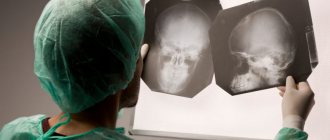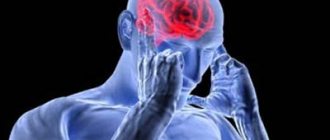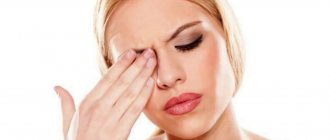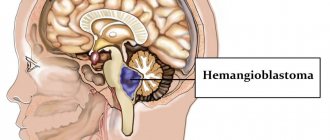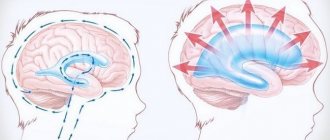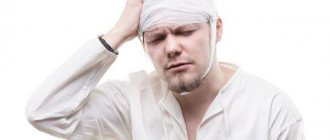Every person experiences headaches from time to time. It is associated with various external factors and goes away quickly without taking pills. 15% of people suffer from frequent, severe headaches. Doctors at the Yusupov Hospital conduct their examination using modern instrumental and laboratory diagnostic methods.
For headaches, people prescribe analgin, no-shpu, askofen, citramon. They relieve pain, but do not affect the cause of the pain. After determining the cause of the headache, doctors at the neurology clinic carry out complex therapy. Rehabilitation specialists use innovative non-drug treatments.
Professors and doctors of the highest category discuss complex cases at a meeting of the Expert Council. Leading specialists in the field of headache treatment collectively develop further tactics for patient management. Patients have the opportunity to undergo complex examinations and treatment at partner clinics of the Yusupov Hospital.
Causes of headaches in the crown area
Among the causes of parietal headaches are acute and chronic diseases of the hearing organ, nerves, muscles and joints, as well as the vascular system. Vital organs are concentrated in the area behind the ears, so ignoring painful sensations is dangerous. You should pay attention to the time of occurrence and nature of the headache in the crown, its intensity - this information is important for the attending physician during diagnosis.
Diseases of the hearing organ
If the parietal part of the head hurts on one or both sides, a hearing test must be performed. It has a complex structure, and disorders or inflammatory processes in any area can lead to painful sensations behind the ears. The difficulty of the examination lies in the fact that the internal parts of the hearing organ are not visible to the naked eye even when using standard diagnostic techniques. However, new diagnostic methods make it possible to accurately determine the cause of pain in the parietal part of the head associated with diseases of the hearing organ.
Otitis
Otitis is an inflammation of the ear in any of its parts. The cause of the disease can be injury, bacterial infection, or mechanical blockage of the ear canal. In children, chronic otitis media is often caused by hypertrophy (abnormal growth) of the adenoids. Inflammation can be acute or chronic, aseptic or purulent. It is important to treat the disease in a timely manner, since otitis often becomes chronic and worsens with hypothermia or colds, and also causes hearing impairment.
There are several types of otitis, depending on the location of the inflammatory process:
- Otitis externa - affects the ear canal and the outer surface of the eardrum, rarely spreading to the auricle. This is the most common and safest type and can be easily treated with ear drops. The pain becomes more severe when opening the mouth.
- Otitis media is an inflammation of the auditory tube and other components of the middle ear. The disease is accompanied by acute pain, which often intensifies at night. Patients also complain of a sharp deterioration in hearing, pain in the temples and frontal part of the head, noise and ringing in the ears.
- Internal otitis (labyrinthitis) is a rare, but most dangerous type. If the process spreads to the inner ear, it can lead to inflammation of the auditory nerve and hearing loss. Treatment is complex and includes a course of antibiotics, anti-inflammatory and painkillers.
With inflammation of the outer ear, the pain is one-sided, throbbing, spreads to the parietal region and intensifies during head movements. If the cause is a bacterial infection, discharge from the ear canal appears. When the internal parts are damaged, the pain spreads to the entire surface of the head. Treatment of otitis involves the use of anti-inflammatory ear drops and tablets, and also includes a course of antibiotic therapy.
Mastoiditis
Mastoiditis is inflammation of the mastoid process of the temporal bone. The disease often manifests itself as a complication of otitis media and is of bacterial origin. It is diagnosed in both adults and children of any age. This is a dangerous disease, since a bacterial infection causes purulent melting of tissues and, without appropriate treatment, can spread to important formations, including brain structures.
Mastoiditis can be identified by the following symptoms:
- the onset of clinical signs – some time (from several days to several weeks) after the development of otitis media;
- pain in the parietal region of the head and ears;
- increase in general body temperature;
- the appearance of purulent discharge from the auditory canals;
- protrusion of the auricle, possible redness of the skin and the appearance of a painful swelling behind the ear.
The basis of treatment for mastoiditis is a course of antibiotic therapy. At the same time, a regimen is prescribed aimed at relieving inflammation and pain. In the absence of timely therapy, the process can spread to the structures of the inner ear and cause purulent melting of tissues. Typical complications are perforation of the eardrum and the formation of a postauricular purulent abscess under the periosteum. Rarely, a bacterial infection with mastoiditis spreads to the temporal lobe of the brain or to the neck area with the formation of an abscess.
Blockage of the ear canals
The main cause of mechanical blockage of the auditory canals, which leads to pain in the parietal part of the head, is cerumen plug. It is formed either due to lack of hygiene and ear care, or due to increased formation of wax. In addition, the process can be triggered by the incorrect structure of the ear canals, their narrowing due to anatomical features.
In some patients, the wax plug is visible to the naked eye. It is a collection of gray or brown dense mass that completely blocks the ear canal. However, it may be located in the far part of the outer ear. Its presence can be assumed by characteristic symptoms:
- gradual deterioration of hearing, including one-sided;
- the appearance of sensations of noise, ear congestion;
- nausea and vomiting that occurs regardless of food;
- headaches in the parietal part of the head.
Blockage of the ear canal can be caused by foreign objects. More often they get into the ears of children, causing pain and hearing impairment over time. If a child complains of headaches in the parietal part of the head, it is necessary to contact an otolaryngologist to check the contents of the ears. Foreign objects are removed with special tools. It is not recommended to carry out the procedure at home, so as not to damage the eardrum.
Meniere's disease
Meniere's disease is a chronic disease of the inner ear in which the amount of endolymph in the labyrinth increases. This value is not constant, it may increase due to deterioration in the removal of fluid from the body, poor diet, or taking certain groups of drugs. The disease often manifests itself in acute form in patients aged 20 to 50 years and may have a hereditary origin. Also, increased pressure in the inner ear can be caused by head injuries or allergic diseases.
Meniere's disease can be recognized by the following signs:
- attacks of dizziness that last from 1 to 6 hours, rarely longer;
- nausea and vomiting, increased sweating;
- unsteadiness of gait, loss of coordination of movements;
- pain in the ears and in the parietal part of the head.
The labyrinth is a formation in the inner ear formed by the bones of the skull. It has a complex structure and performs several functions simultaneously. It picks up sound vibrations and transmits information to the brain, but is also a center of balance, thanks to the regulation of the amount of endolymph. Treatment of the disease is symptomatic, often the doctor prescribes diuretics and a low-salt diet. These principles allow you to stimulate the removal of excess fluid and prevent its accumulation in the body.
Fungal diseases
Otomycosis is a fungal disease that can cause pain in the crown and behind the ears. Its causative agents are various representatives of human fungal microflora. The disease can develop when an infection enters from the outside or when it spreads from other existing foci. It can also penetrate during trauma and surgery. Otomycoses often occur in humid and dusty climates. This air contains a large number of microorganisms, and after they enter the ear, an optimal environment is created for their development.
Otomycoses are classified according to the place of their occurrence and typical clinical signs:
- otomycosis of the outer ear is the most common type, manifested by itching and soreness of the auricle;
- mycotic otitis media is a dangerous disorder that is a fungal complication of bacterial otitis;
- fungal myringitis - damage to the eardrum, which can lead to thinning and perforation;
- otomycosis of the postoperative cavity - antibiotics and steroidal anti-inflammatory drugs create a suitable environment for the development of fungal microflora.
Otomycosis progresses rapidly without the use of antifungal drugs. The infection causes pain in the ears and crown of the head, itching and hearing loss. The diagnosis is made based on the examination of smears, in which various representatives of fungal microflora are found.
Cochlear neuritis
Cochlear neuritis is inflammation of the auditory nerve. This is an acute or chronic disease that leads to acute pain and hearing impairment. Acoustic neuritis can be caused by inflammation of the inner or middle ear, as well as various infectious diseases. In addition, its damage is observed in cases of poisoning, as a result of traumatic brain injuries and operations during which nerve fibers are damaged.
With cochlear neuritis, there is acute pain in the ears and head, which can be concentrated in the parietal region. Nausea, vomiting, and loss of coordination of movements also develop. Patients complain of a sharp deterioration or complete loss of hearing, tinnitus and other auditory hallucinations.
Inflammatory diseases
Pain in the parietal part of the head is the body’s response to various inflammatory reactions. Vital formations are located in this area, so it is important to undergo an examination and determine the causes of discomfort. There are several inflammatory diseases that can be diagnosed in adults and children with pain in the parietal part of the head.
- Inflammation of the temporomandibular joints is a common cause of pain in the crown area. These joints are located symmetrically near the ears and connect the upper and lower jaws. Their inflammation can be a consequence of injury or dental disease.
- Sinusitis is inflammation of the paranasal sinuses. These are cavities formed by the bones of the skull, normally filled with air. This group includes sinusitis, frontal sinusitis, ethmoiditis, sphenoiditis, as well as combined forms. When inflammation occurs, the cavities become filled with contents, which in advanced cases must be removed surgically.
- Lymphadenitis is inflammation of the lymph nodes. The process is often associated with previous infectious diseases, since the lymph nodes are an organ of immune defense. Lymphadenitis can also develop with congenital or acquired immunodeficiencies.
- Meningitis is a dangerous disease in which inflammation of the membranes of the brain occurs. The pain is acute, girdling, spreading to the parietal region and the entire surface of the head.
Inflammatory diseases should be treated in the early stages. Otherwise, they can progress and spread to surrounding organs and tissues. For therapy, a course of anti-inflammatory drugs is selected that will eliminate the main cause of pain in the parietal part of the head.
Infectious diseases
A viral or bacterial infection that enters the body from the outside is one of the main causes of pain and inflammation. Its representatives cause inflammation and pain, as well as various additional symptoms. There are several diseases that can cause pain in the parietal part of the head.
- Infectious mumps (mumps) is an inflammation of the parotid salivary glands caused by viruses. The disease most often occurs in children. The typical clinical picture includes symmetrical enlargement of the salivary glands under the ears, increased temperature and a general deterioration in health. Specific prevention includes vaccination.
- Shingles is a viral disease that causes severe headaches. In chronic cases, hearing loss may occur.
- Flu, sore throat, ARVI - viral diseases of the respiratory tract can also cause pain in the parietal region. After some time, fever, rhinitis, cough and other characteristic signs of a cold are added to the symptoms.
Infectious diseases often worsen and cause headaches in the crown of the head during the cold season and in the off-season. This is due to a decrease in vitamin intake, insufficient sunlight exposure to the skin (the main source of vitamin D), as well as a weakened immune system. Treatment is specific, prescribed based on the symptoms of the disease and an accurate diagnosis; a course of antibiotics may be required.
Other reasons
Soreness in the crown area is a typical symptom for various diseases. They have different origins and may be accompanied by additional symptoms. It is important to conduct a complete differential diagnosis in order to exclude the possibility of developing even rare pathologies and determine the exact cause of pain. The examination may reveal the following abnormalities:
- osteochondrosis – a disease of the intervertebral discs and vertebrae, which is accompanied by compression of blood vessels and nerves, acute headaches;
- migraine – attacks of unilateral headaches that have a chronic recurrent course;
- high blood pressure;
- dental diseases, including caries, incorrect position of wisdom teeth - the cause of pain that spreads from the upper jaw to the area behind the ears.
Treatment and prevention methods differ for different disorders. The attending physician will be able to select the appropriate tactics. The Clinical Brain Institute specializes in the diagnosis and treatment of disorders that are accompanied by pain in the parietal part of the head.
The first table excludes
Thus, it is important for the pharmacist to exclude hypertension, which requires mandatory consultation with a doctor. To do this, you need to ask a few questions.
- Questions about the nature of GB:
- What is the intensity of headache, its nature and localization?
- Are there any accompanying symptoms?
- What causes headache attacks?
- Questions about HD treatment:
- What medications for migraines and headaches has the patient already used or is currently using?
- With what effect?
- Presence of warning symptoms requiring mandatory medical attention:
- Intense headache with a sudden (“explosive”) onset can develop with subarachnoid hemorrhage.
- Headache with an atypical aura lasting more than an hour or motor weakness is characteristic of a cerebrovascular accident - transient ischemic attack or stroke, as well as the presence of an aura without headache, although there was previously migraine with aura.
- An aura that first appears in a patient taking combined oral contraceptives may indicate a risk of stroke.
- Increasing headache that gets worse over several weeks or more, or headache that gets worse with changes in posture, coughing, sneezing, or straining, may indicate the presence of a space-occupying intracranial formation.
- Also requires consultation with a neurologist in headaches accompanied by focal neurological symptoms (shaky gait, unilateral and bilateral paralysis, etc.), and headaches with fever of unknown origin.
- A previous fall or head injury is a reason to see a doctor to rule out a TBI.
The presence of an intense headache, spreading to half of the head, accompanied by nausea, vomiting, sensitivity to light and sound, or a typical aura, may indicate a migraine. Severe (even unbearable) unilateral pain in the temple, orbit, or mixed localization, accompanied by a feeling of anxiety and/or autonomic symptoms on the side of pain, indicates the presence of cluster headache. In both cases, the pain syndrome is poorly controlled by conventional analgesics and requires the prescription of specific therapy by a doctor. Headache accompanied by severe pain in the eyes and blurred vision requires exclusion of glaucoma.
Long-term previous use of analgesics allows one to suspect the development of excessive hypertension, which also requires consultation with a neurologist.
Diagnostic methods
To diagnose pain in the parietal region, instrumental and laboratory techniques are used that make it possible to determine the exact cause of the discomfort. A simple examination reveals inflammatory processes, neoplasms, abscesses, as well as symptoms of infectious diseases. However, to understand the full picture of the disease, the following tests may be prescribed:
- examination of smears and scrapings from the ears, skin, and mouth;
- blood tests to determine pathogens of viral diseases and pathologies of individual organs;
- consultation with an otolaryngologist - instrumental techniques will allow you to identify various diseases of the hearing organ;
- examination by a dentist - prescribed if caries, abscesses, or incorrect position of teeth during their growth are suspected;
- CT, MRI of the head - these techniques are used to diagnose brain tumors.
The Clinical Brain Institute has modern equipment that allows for accurate and high-quality analyzes. There is also the opportunity to consult with general and specialist doctors who specialize in various areas.
Brain Facts
- The average brain weight is 1300-1400 grams. That is, having a mass of no more than 2% of the entire body, it consumes a quarter of all energy.
- The brain is 60% fat.
- Has no pain receptors. Therefore, when neurosurgeons perform operations, they inject painkillers only into the scalp
- From large doses of alcohol, the brain loses the ability to create memories. Therefore, when a person has a large dose of alcohol, he does not remember the events that occur.
- The brain often doesn’t care whether you actually do something or imagine it in pictures. If you imagine a dangerous and extreme situation in your mind, your heart rate will immediately increase. This feature of our psyche has long been known to athletes. Many of them do visualization before competitions: they imagine all sorts of situations that could happen to them during tournaments. Research has proven that this method improves the performance of athletes because it prepares their muscles and body.
- There is a phenomenon known as phantom pain. For example, when a person's leg is amputated, he still experiences pain in it. This happens because there are nerve endings in the brain that are responsible for sensing pain in that leg.
Treatment of parietal headaches
Treatment tactics are selected individually, depending on the exact diagnosis. Most diseases can be treated conservatively, using tablets, injections, ointments and drops. The scheme may include the following steps:
- anti-inflammatory therapy - tablets and injections help relieve inflammation and pain;
- antibiotics - prescribed for bacterial infections, as well as to prevent its occurrence in inflammatory diseases;
- additional methods - the doctor may prescribe means for removing excess fluid, antifungal and other drugs;
- physiotherapy – a set of techniques to improve hearing in case of ear diseases;
- surgical methods are necessary for removing foreign bodies from the ear canals, treating purulent sinusitis, as well as for removing abscesses and neoplasms.
At the Clinical Brain Institute there are opportunities to undergo inpatient or outpatient treatment. The regimen will include only those drugs and procedures that will help quickly get rid of the cause of pain and symptoms of the underlying disease. At home, it is important to follow all the recommendations of doctors in order not only to relieve pain, but also to prevent further development of the disease.
How to correctly identify the disease?
As soon as a preliminary history is collected, complaints are heard, first assumptions about a possible disease are made, a comprehensive diagnosis is prescribed, which includes the following procedures:
- Laboratory blood analysis.
- Radiography.
- Electroencephalography.
- Angiography.
- MRI of the brain.
- CT scan of the skull or cervical spine.
- MRI of soft tissues of the neck.
The most informative techniques are tomographic sessions. They give a complete picture of the existing changes in tissues and the root cause of the pathology. Even microscopic abnormalities, precancerous stages, and vascular abnormalities clearly appear on scans in one short procedure.
To undergo a full examination at a specialized tomography center, just contact our service, which works free of charge. Choose CT or MRI services, consider offers from different clinics in the city, compare options based on prices, equipment, ratings and other criteria. Here you can remotely consult on existing questions and sign up at your favorite institution with discounts from the service. Contact us, we will be happy to help you.
Methods for preventing parietal headaches
To prevent diseases of the hearing organ, it is necessary to maintain ear hygiene and immediately consult a doctor if foreign objects get into the ear canals. It is also important to strengthen your immune system, get enough vitamins and lead an active lifestyle at any time of the year. To prevent swelling and high blood pressure, you need to monitor your diet and avoid large amounts of salt and spices.
Doctors at the Clinical Brain Institute emphasize that timely prevention will help prevent most viral diseases, dental problems and hearing impairment.
Kinds
Neurologists distinguish the following types of headaches:
- Migraine – caused by a disruption of the vascular system;
- Tension headache - mainly occurs due to excessive tension in the neck, eye muscles, as well as the muscles of the shoulder girdle and scalp aponeurosis, as well as due to chronic stress, depression;
- Chronic paroxysmal hemicrania, cluster headache - can be primary or secondary.
- Headache not associated with damage to brain structures;
- Ambus headache that occurs when taking medications uncontrolled.
There are also headaches after traumatic brain injury, with diseases of the vascular system, and those that occur with intracranial disorders of extravascular origin.
Tensor headaches often occur in women after stress or nervous shock. It goes away in the presence of positive emotions, after drinking soothing herbal teas.
Neurologists do not recommend taking headache pills on your own. Each drug is designed to relieve a specific type of pain and has a number of contraindications. The doctor takes all this into account when prescribing a medicine to a patient.
Make an appointment
Migraine
Migraine is the most common type of headache.
It most often occurs in women from the onset of puberty (from 11-13 years) to 35 years. Migraine can be simple or with an aura. It can occur in the temple, crown, back of the head, and forehead. The cause of the disease is a hereditary disorder of vasomotor regulation of arteries located outside and inside the cranium. With migraines, headaches occur in the form of attacks. They bother you at varying frequencies - from once a week to once a year. The attack lasts from several hours to 3 days. Usually the pain is throbbing and covers half of the head. It often occurs after physical activity, stress, lack of sleep or too much sleep, or eating certain foods. A migraine attack is accompanied by nausea and vomiting, intolerance to bright light, noise, and strong odors. Sometimes the headache is very severe and lasts for several days - this condition is called status migraine. According to statistics, migraine occurs in 2% of people.
Neurologists believe that a migraine attack develops under the influence of the following provoking factors:
- Chronic stress;
- Overwork;
- Intense mental work;
- Hormonal disorders.
Often the cause of migraine is a family history.
